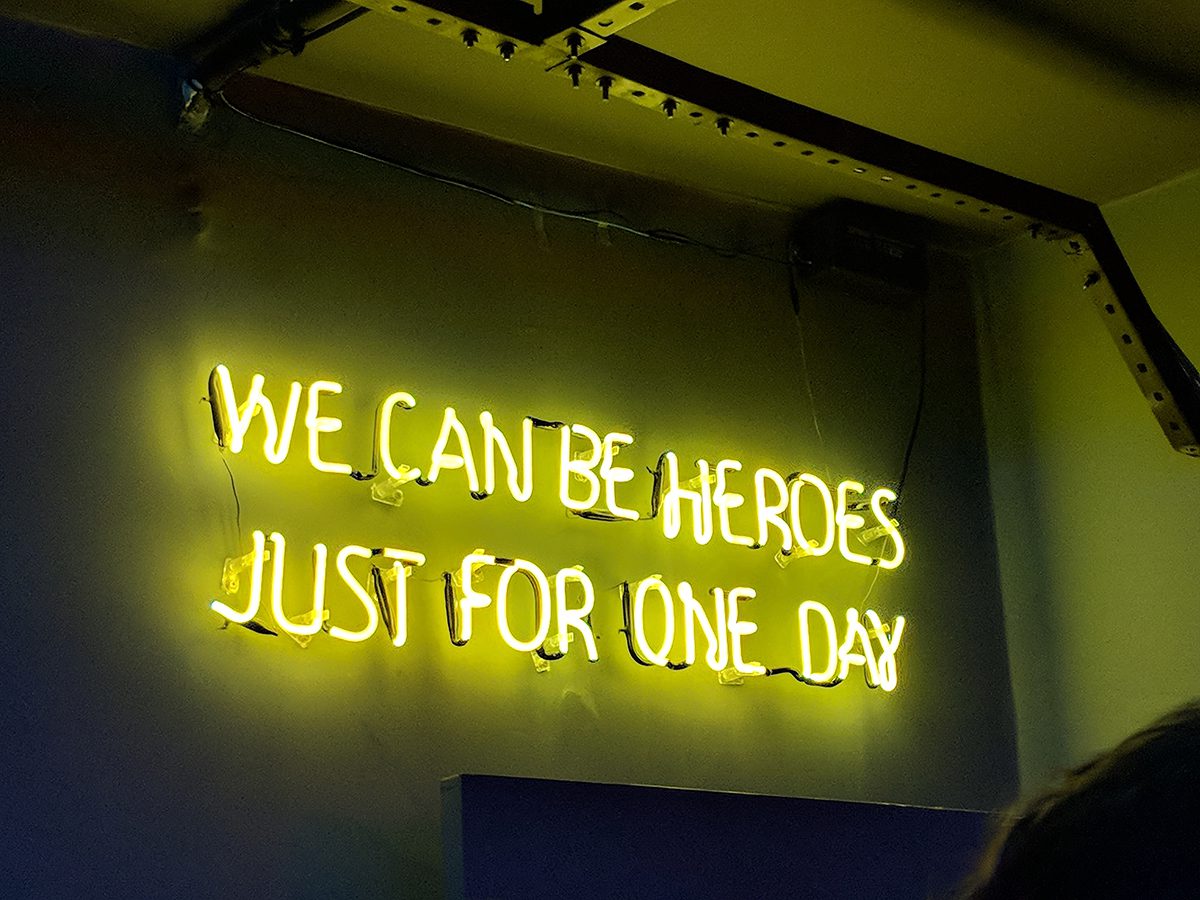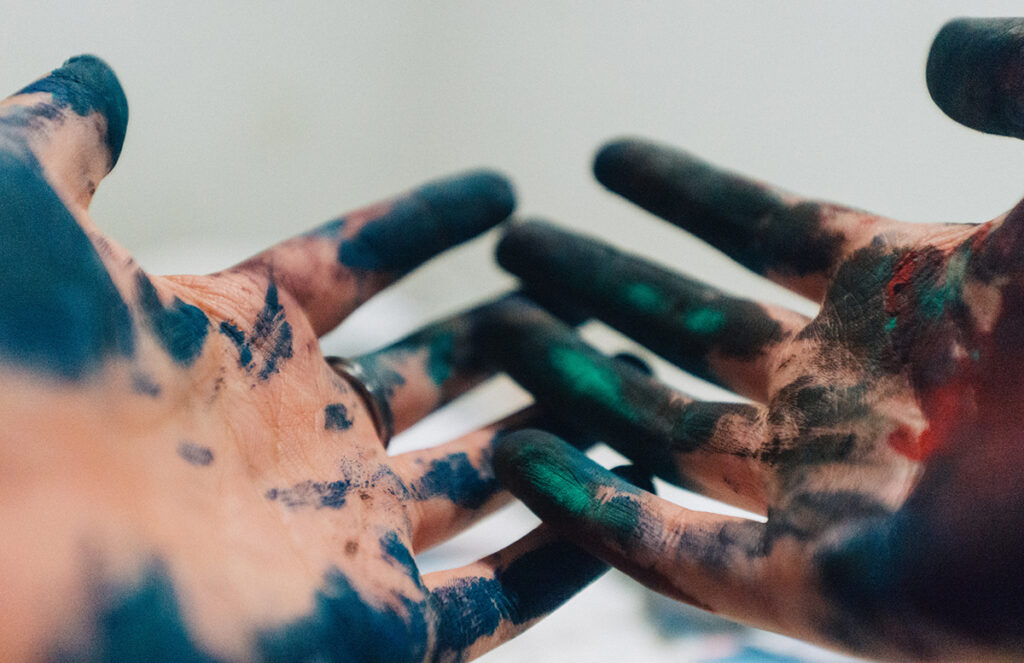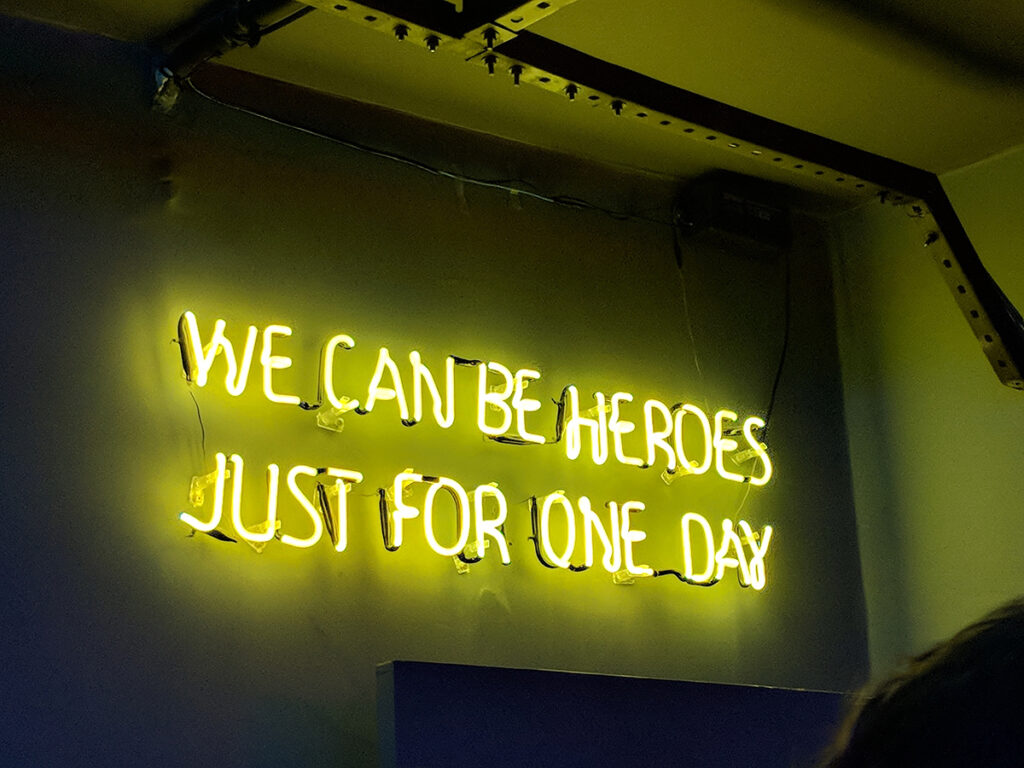Teaching, as we know, is much more than a job; it is a huge piece of who we are. It’s our identity, and just like other aspects of our identity, our teaching identity shifts and pivots based on our path and personal growth. You might change schools, move to a new location, have a child, adopt a puppy, or become a principal. Something completely unexpected could also happen to make you reconsider your identity as an art teacher.
For those of you who have been teaching for more than ten years, it’s a lot easier to look back and see the progression of your teacher identity. For those of you newer to the field, it’s fun to pinpoint where you are now! And for those of you leaving the art classroom, see if any nontraditional ways to continue your passion spark an interest.
As we go through seven phases of being an art teacher, reflect on where you are now, where you have been, and where you want to go.
Phase 1: The Fairy Art Mother
You have a glamorous vision of what your life as an art teacher will look like. You love art, people, and teaching, so the obvious choice is to become an art teacher. You will make crafts all day long, wear an apron, play with paint, and inspire others. Being an art teacher looks like so much fun!
Reality Check: Clearly romanticized, this is also known as the “everyone knows what it’s like to be a Fairy Art Mother teacher because we have all been taught by one” syndrome. Teaching looks easy because our role models were highly experienced.
Phase 2: The Young Artist Art Teacher
You are artsy and quirky. You have a flare of your own. You work your way through art school, where you probably try on a dozen identities before settling on something that feels comfortable. Each time you try something new, it feels totally awkward and completely you all in one. But you are an artist and an art teacher, so you make sure you look the part.
Reality Check: Everyone struggles to find their identity regardless of expertise or profession. The phrase “you do you” may be the understatement of the year.
Phase 3: The Hero Teacher
You studied so much educational theory you thought you would save the world through art, one student at a time. Social justice is the most powerful and effective way to teach art. You will walk into a Title 1 school and be woke. You will play guitar at the beginning of each class and will be instantly loved. After all, this is your calling.
Reality Check: While art does make a difference and will eventually save the world, it’s time to eat some humble pie and realize you aren’t the first teacher to think they are the hero. Have you seen Dangerous Minds?
Phase 4: The Perfectly Put Together Teacher
You know exactly how to hush an entire room just by simply gazing at the floor. You are the Mary Poppins of teaching. You always look incredible with your coordinated outfits. You have a calm demeanor, are always smiling, and never look frazzled.
Reality Check: Hindsight is 20/20. All teachers, even experienced ones, started out the same. All teachers have bad days, so chalk them up for what they are and don’t let it phase you. It’s a marathon, not a sprint—there are more good and bad days to come.
Phase 5: The Overachiever Teacher
You feel more comfortable in your own body and with your own voice in the classroom. You have the curriculum under your belt. But there’s always more to do, so you keep on revamping your lessons, tweaking the rubrics, and changing the pace. While you are no longer “volun-told” to be on committees, you still feel constant pressure to be and do everything. The exhaustion is real, but you “didn’t go into teaching for the money.” You love the students and the teaching, so you keep grinding through the behind-the-scenes drama and endless paperwork.
Reality Check: Every teacher is overwhelmed at some point (or all points!) of their teaching career. Teaching is really hard, and it doesn’t get any easier. But, healthy teachers get better at setting boundaries and balancing their lives.
Phase 6: The Ten-Year Stride Teacher
Finally! You hit your stride and made a mark for yourself. You know how to balance all of the extra responsibilities that come with being an art teacher, and you know how to collaborate well with your colleagues. Your curriculum is solid, and you tweak and change when you want to—not because you have to.
Even if you moved to different schools, you know who you are as a teacher. You spent years reflecting on your practice and what worked and what didn’t. Your philosophical approach is down pat, and you have the capacity to ponder the nuances of teaching and education. You have long-term goals as a teacher, you understand how your students work and think, and you finally have the space to be yourself.
Reality Check: There is nothing to read between the lines here. Although the ten-year stride is a magical place to be, it doesn’t mean everything is all unicorns and rainbows. As we talked about before, teaching is hard!
Phase 7: The Burned Out Teacher
Unfortunately, this can happen at any point in your teaching career. If you haven’t personally experienced burnout, you have seen it on someone else. They roll their eyes at any new initiative or exciting new program and manage to find the negative. These teachers often think you are doing “too much,” and you will get over it soon enough. They tend to put down new ideas and prefer the status quo. You see them and think, “That will never be me! I love this job! I live for this!” But alas, the burnout is real and can come for you, too.
Reality Check: It sounds so threatening, doesn’t it? But burnout is a real thing which is why so many teachers have to take a break in the summer to recharge. Just be careful that you don’t get stuck in an ongoing rut. When teaching loses all of its joy, it is time to take a vacation!
Who am I now, if not in the classroom?
All joking aside, being an educator is a huge piece of our identity. When the pandemic hit, many teachers retired early, took leave, or resigned positions to keep themselves and their loved ones safe. When something quick and unexpected occurs, and you have to shift your focus away from teaching, your identity will inevitably shift too.
When leaving the classroom, there is a moment of pause as you contemplate your new identity. The hustle and bustle of your routine suddenly stops, and you are left to figure out what is next.
Recognize that you will always be a teacher and educator. It is a quality ingrained in who you are as a person. Teaching will always be there when you are ready to come back. Take some time to decompress and slow down. Take time to grieve your loss or celebrate your decision. Depending on the event that changed your path, you may need to shift your focus onto a new responsibility.
Whether you are just taking a break or figuring out your new path, it’s time to decide what you loved (and didn’t love) about teaching. As you redefine your new teaching identity, look for other ways to stay connected with the parts of teaching that filled your bucket.
Here are some creative suggestions to stay connected with art education:
- Teach other teachers. Become a consultant, look to higher education, or shift into a Learning Support Coach position.
- Teach art classes outside of the school setting. Children and adults are always looking to bolster their creative outlets. You get to set your own hours too!
- Focus on your own artwork. Creating for yourself can be incredibly rewarding. Whether or not you are creating to sell, you will find purpose in your own practice. If you feel stuck with artmaking, consider AOEU’s newest course, Rediscovering Your Artistic Identity.
- Start a business. Maybe you have always wanted to sell your artwork or start a coffee shop that supports local artists.
- Join the AOEU staff. There are so many different positions available, from PRO Facilitators to Magazine Writers and more.
- Volunteer at a school. Schools, especially now, are always looking for volunteers to help supervise or support their staff.
- Become a substitute. If you love teaching but don’t love the extra responsibilities outside of school hours, you might enjoy the flexibility of being a sub.
- Work as a museum educator. Art education isn’t just for the classroom. Check your local museums to see how you might fit in their educational programs.
- Work at your local library. Some libraries have Makerspaces or are looking for educational support staff. Libraries are a great way to stay connected and continue to give back to the community.
- Teach overseas. Maybe you need a good reason to travel. Get a change of scenery, meet new people, and learn new perspectives in an overseas assignment.
- Change it up. Maybe you need a career change. There are plenty of ways to access your inner teacher regardless of what field you move into.
No matter where your path leads you in life, teaching will always be a part of who you are. Take time to reflect on where you are in any phase of your teaching journey. When the unexpected comes along, make sure you address your inner art teacher as you pivot your focus.
What does your art teacher identity look like right now?
How have you addressed unexpected changes to your career?
What other plans could you see yourself pursuing beyond the classroom?
Magazine articles and podcasts are opinions of professional education contributors and do not necessarily represent the position of the Art of Education University (AOEU) or its academic offerings. Contributors use terms in the way they are most often talked about in the scope of their educational experiences.









